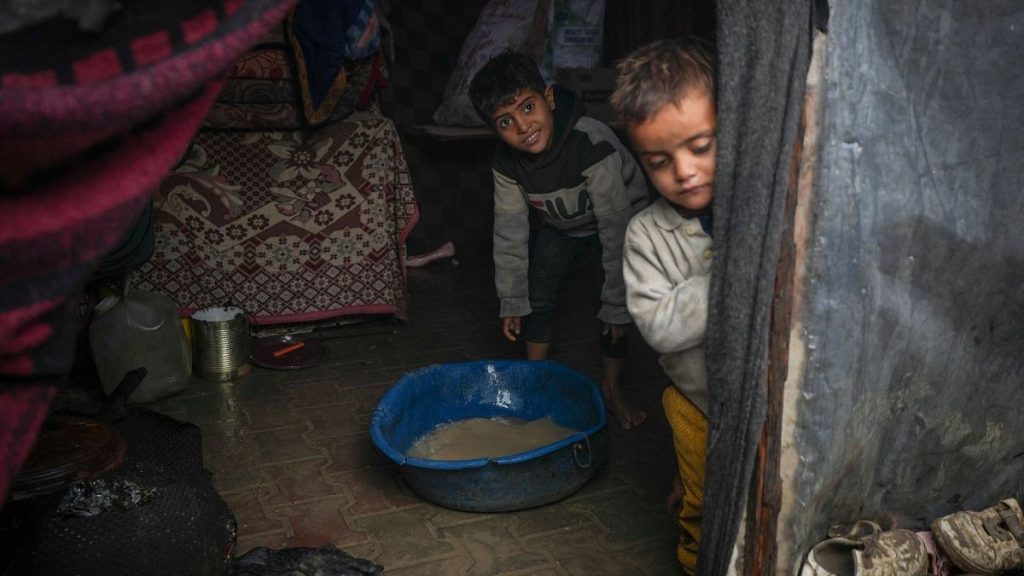The escalating humanitarian crisis in Gaza has reached a critical juncture, with thousands of Palestinians requiring urgent medical care outside the besieged territory. The Israeli offensive, launched in response to the Hamas attack in October 2023, has decimated Gaza’s healthcare infrastructure, rendering most hospitals non-functional and leaving the remaining few operating at a diminished capacity. Dozens of patients, including children with serious conditions like kidney failure, have been evacuated to countries like the UAE through the Israeli-controlled Kerem Shalom Crossing. However, the process is fraught with difficulties, as exemplified by Israeli authorities denying passage to family members accompanying young patients. The UN has documented numerous Israeli strikes on hospitals and medical facilities, raising serious concerns about potential violations of international law. While Israel alleges militant use of these facilities, the UN maintains that evidence supporting these claims is insufficient.
The dire health situation in Gaza is further compounded by Israel’s control over all entry and exit points, significantly hindering access to essential medical supplies and personnel. The UN has described the healthcare system as being on the brink of collapse, highlighting the urgent need for humanitarian intervention. The evacuations offer a lifeline for some of the most vulnerable patients, but they represent a mere fraction of the thousands requiring specialized medical treatment unavailable in the ravaged territory. The ongoing conflict and restrictions imposed by Israel have created a humanitarian catastrophe, leaving Palestinians with limited access to basic necessities and essential services. The international community faces a growing challenge to address this crisis and ensure the well-being of the affected population.
Beyond the immediate healthcare crisis, the political landscape remains volatile. Israeli Prime Minister Benjamin Netanyahu, defying doctor’s orders following prostate surgery, attended a crucial budget vote, securing a majority for his coalition government. This underscores the precarious political balance within Israel, even as the Gaza conflict continues. Meanwhile, the US launched airstrikes against Houthi military facilities in Yemen’s capital, Sanaa, in response to Houthi attacks on US vessels in the Red Sea. This intervention adds another layer of complexity to the regional instability, with the Houthis vowing to continue their attacks until a ceasefire is reached between Israel and Hamas in Gaza.
Adding to the intricate web of regional conflict, Israel officially acknowledged its involvement in the assassination of Hamas leader Saleh Arouri in Beirut. This admission confirms Israel’s covert operations against Hamas leadership figures outside of Gaza, further escalating tensions. Simultaneously, France carried out airstrikes against Islamic State militants in Syria, marking its first such action since the fall of Bashar al-Assad. This underlines the continuing fight against ISIS in the region, even as political dynamics have significantly shifted. These events collectively paint a picture of persistent instability and conflict across the Middle East, with interconnected struggles fueling further violence and humanitarian crises.
Within the occupied territories, Israel’s Shin Bet security service reported the arrest of thousands of Palestinians in both Gaza and the West Bank, citing security concerns and alleged involvement in “terror activities.” The agency claims to have recovered bodies of hostages taken during the October 2023 Hamas attack, though the methods and circumstances surrounding these recoveries remain unclear. The high number of arrests underscores the ongoing tension and security challenges in the region. Furthermore, the Shin Bet revealed a significant increase in Israelis charged with spying for Iran, adding another dimension to the already complex security landscape.
Exacerbating the already dire humanitarian situation in Gaza, heavy rains have flooded makeshift shelters, further compounding the suffering of displaced families. With thousands living in tents and inadequate housing, the cold weather and flooding have created a new crisis, leading to tragic deaths from hypothermia, particularly among infants. The desperation and anguish of the displaced population are palpable, as they struggle to salvage their meager belongings amidst rising floodwaters. The prolonged offensive against Hamas has left a trail of destruction and displacement, leaving the vast majority of Gaza’s residents in precarious and vulnerable conditions. The combination of conflict, displacement, and severe weather has created a humanitarian emergency requiring urgent international attention and assistance.














